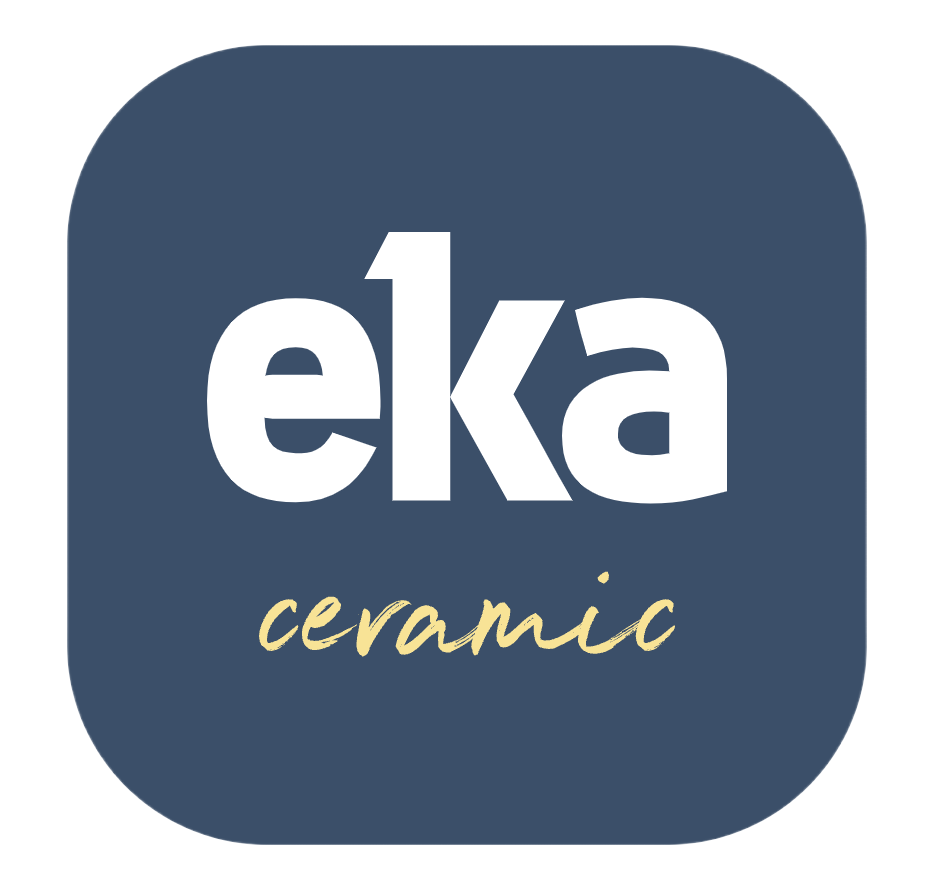Ceramic mugs have been a staple in households and workplaces for centuries, providing a classic and durable vessel for hot beverages like coffee and tea. However, as new materials such as plastic and stainless steel emerge as alternatives, questions arise: Is drinking from ceramic mugs healthy? How do they compare to other materials in terms of safety, durability, and taste? In this article, we’ll dive deep into the production process of ceramic mugs, evaluate their potential effects on health, and compare them with other popular mug materials.
1. The Production Process of Ceramic Mugs
To understand the benefits and potential risks of drinking from ceramic mugs, it’s essential to first look at how they are made.
1.1 Raw Materials
Ceramic mugs are primarily made from clay, a natural material that consists of various minerals, such as:
- Kaolin (China clay): Provides the smooth texture and is essential for making fine porcelain and high-quality ceramics.
- Ball clay: Adds plasticity to the mixture and is used for shaping the mugs.
- Feldspar and Silica: Help lower the firing temperature and provide strength and durability.
These materials are mixed with water to form a pliable clay body, which is shaped into the desired form of the mug.

1.2 Molding and Shaping
Once the clay mixture is prepared, it is shaped into mugs using techniques like slip casting or wheel throwing. Slip casting involves pouring liquid clay (slip) into plaster molds, which absorb the moisture, leaving a solid ceramic shape. Wheel throwing, on the other hand, involves shaping the clay manually on a rotating wheel.
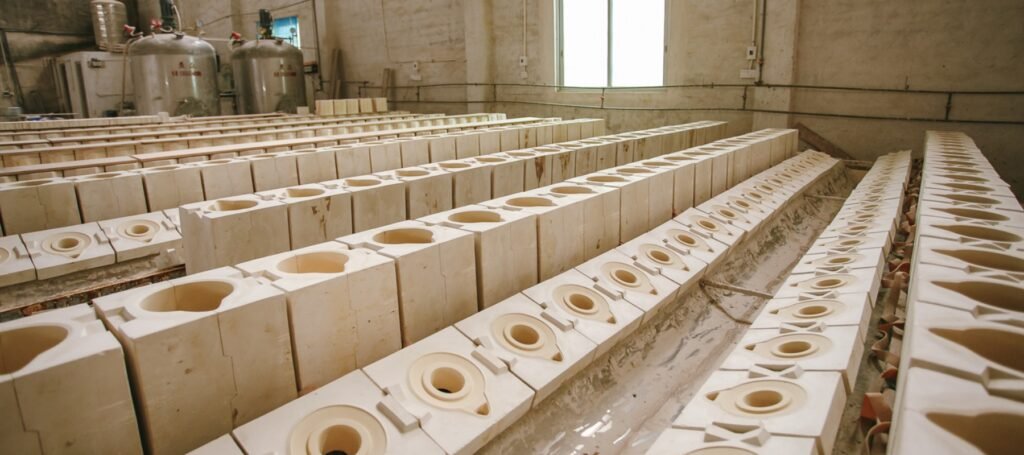
1.3 Firing
After shaping, the mugs are fired in a kiln at high temperatures (typically 1200°C to 1300°C). This process, called vitrification, transforms the clay into a non-porous, hard material. The firing process ensures that the mugs are strong, durable, and resistant to moisture.
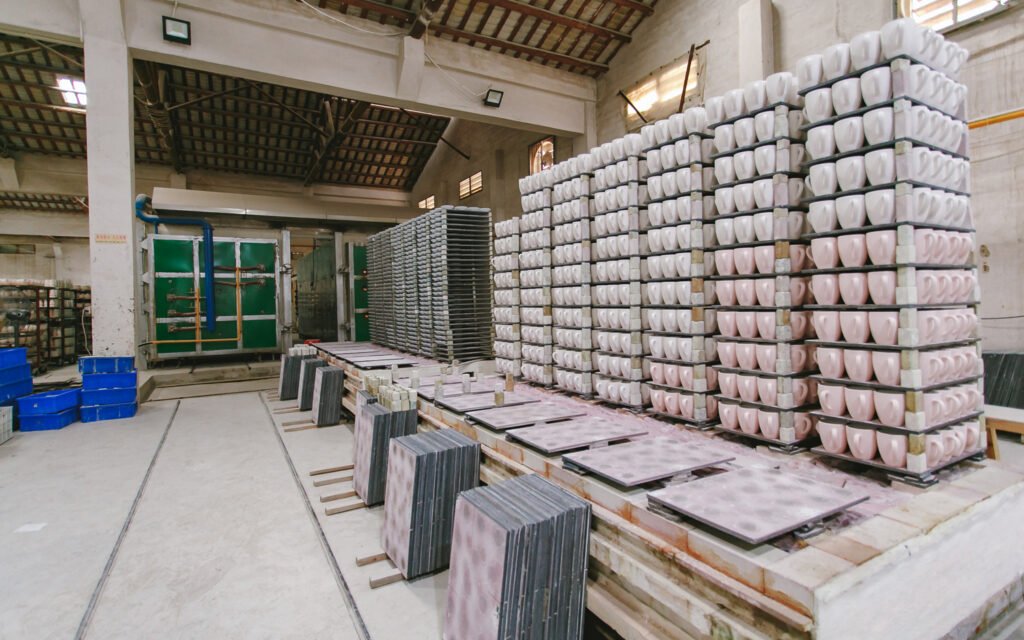
1.4 Glazing
Once fired, ceramic mugs are often coated with a glaze, a glass-like coating that gives the mug its smooth, glossy finish and adds a layer of protection. Glazes also play a significant role in the safety of ceramic mugs. Lead-based glazes, for example, were historically used to achieve certain colors and finishes. However, lead can leach into beverages and pose health risks, which is why modern manufacturers typically use lead-free glazes that comply with food safety standards.
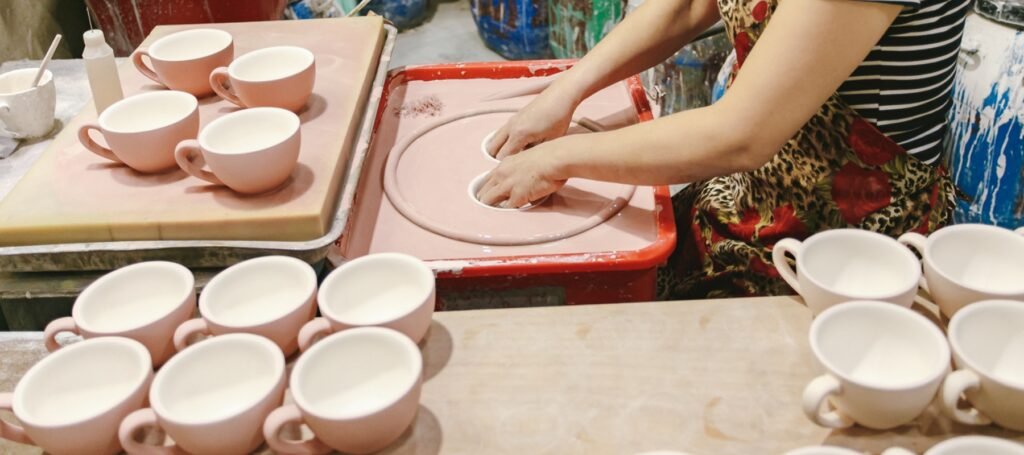
1.5 Second Firing
After glazing, the mugs undergo a second firing process to harden the glaze and seal the surface. This step ensures the mug is fully waterproof and resistant to stains, scratches, and wear over time.
2. Health Implications of Drinking from Ceramic Mugs
Ceramic mugs are generally considered safe for drinking, especially when produced using food-safe glazes and following standard production methods. However, several factors need to be considered:
2.1 Lead and Cadmium Concerns
Historically, some ceramic mugs used glazes that contained lead and cadmium, particularly to achieve bright colors or intricate designs. Both lead and cadmium are toxic heavy metals that can leach into beverages when exposed to acidic liquids like coffee or tea. Consumption of these metals can lead to serious health issues, including lead poisoning and kidney damage.
However, most modern ceramic mugs are subject to strict regulations regarding the use of lead and cadmium in their glazes. Lead-free ceramic mugs, especially those produced by reputable manufacturers, are tested to ensure compliance with food safety standards set by organizations like the FDA, European Food Safety Authority (EFSA), or other local regulatory bodies.
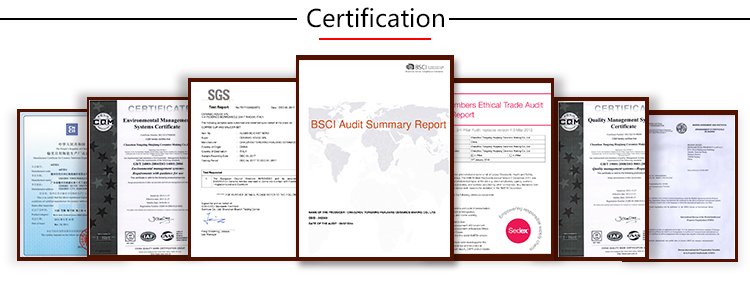
2.2 Heat Retention and Taste
Ceramic mugs excel in heat retention. The porous nature of ceramic allows it to absorb and retain heat, keeping beverages warmer for longer. This is especially beneficial for hot drinks like coffee and tea, as it provides a consistent drinking temperature.
In terms of taste, ceramic mugs do not impart any flavors to beverages. Unlike metal mugs, which can sometimes give a metallic taste, ceramic mugs offer a neutral surface, allowing the beverage’s original flavor to shine through.
2.3 Safety for Hot Liquids
One of the primary reasons ceramic mugs are favored for hot beverages is their ability to withstand high temperatures without degrading or releasing harmful chemicals. Unlike plastic, which can break down and release chemicals when exposed to heat, ceramic remains stable and safe at high temperatures.
3. Comparison of Ceramic Mugs with Other Materials
While ceramic mugs have many advantages, it’s important to compare them with other materials to understand their strengths and weaknesses.
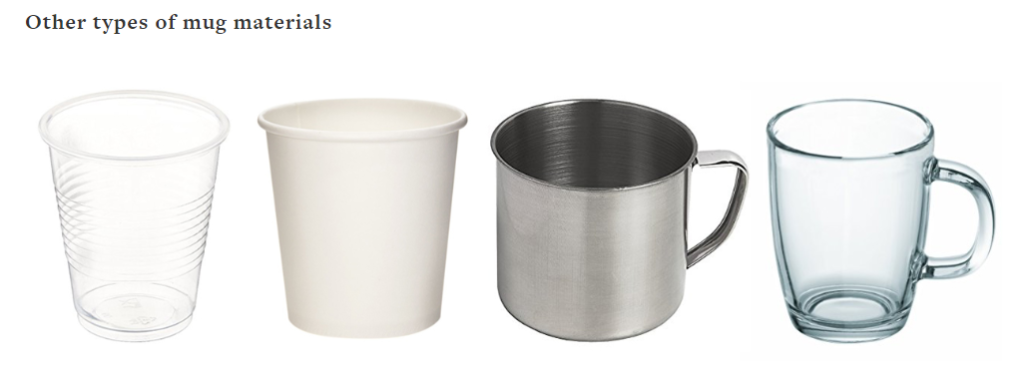
3.1 Ceramic vs. Plastic Mugs
- Plastic mugs are lightweight, affordable, and durable, making them a popular choice for everyday use. However, there are several concerns when it comes to using plastic mugs for hot beverages.
- Heat Sensitivity: Plastic, especially lower-grade plastics, can break down when exposed to high temperatures. Heating plastic may cause chemicals like BPA (Bisphenol A) or phthalates to leach into the beverage, posing potential health risks. Although BPA-free plastics are available, the long-term safety of these alternatives is still under debate.
- Taste Alteration: Plastic mugs can sometimes absorb flavors from previous beverages, which may alter the taste of drinks over time. Additionally, plastic can impart its own taste, especially when used for hot liquids.
- Environmental Impact: From a sustainability perspective, plastic mugs have a higher environmental footprint due to their reliance on fossil fuels and the fact that plastic waste is difficult to break down in landfills. While some plastic mugs are recyclable, not all types are easily processed.
In contrast, ceramic mugs are chemically stable, do not leach harmful substances, and offer a better drinking experience in terms of taste and heat retention.
3.2 Ceramic vs. Glass Mugs
- Glass mugs are another popular choice, especially for those who prefer a minimalist aesthetic. They offer several advantages but also come with their own set of challenges.
- Health and Safety: Glass is one of the safest materials for drinking vessels, as it does not leach any chemicals and is non-porous. It is an inert material, meaning it does not react with acidic or hot beverages. High-quality borosilicate glass is even more resistant to thermal shock, making it suitable for both hot and cold drinks.
- Heat Retention: While glass mugs are visually appealing, they do not retain heat as well as ceramic mugs. The thin walls of most glass mugs allow heat to dissipate more quickly, meaning hot beverages cool down faster compared to those in ceramic mugs.
- Fragility: Glass mugs are more fragile than ceramic mugs. While ceramic mugs can chip or crack if dropped, glass mugs are more likely to shatter, making them less practical for daily use or environments where breakage is a concern.
Overall, ceramic mugs outperform glass mugs in terms of heat retention and durability, while glass mugs excel in safety and visual appeal.
3.3 Ceramic vs. Stainless Steel Mugs
- Stainless steel mugs are popular for their durability and ability to keep drinks either hot or cold for extended periods, especially when used in insulated designs.
- Health and Safety: Stainless steel is a safe material for both hot and cold beverages. However, some individuals report a slight metallic taste when drinking from steel mugs, particularly when consuming acidic beverages like coffee or tea.
- Heat Retention: Insulated stainless steel mugs, such as those with vacuum-sealed double walls, are excellent at retaining heat or cold for long periods, outperforming ceramic mugs in this regard. However, non-insulated steel mugs do not perform as well as ceramic mugs in terms of heat retention for hot drinks.
- Durability: Stainless steel is highly durable and resistant to breakage, making it ideal for outdoor use or environments where the mug is likely to experience rough handling. However, stainless steel mugs can become dented or scratched over time.
While stainless steel mugs are highly practical, they may not offer the same aesthetic appeal or neutral flavor profile as ceramic mugs.
4. Environmental Impact of Ceramic Mugs
From an environmental perspective, ceramic mugs have several advantages over plastic and stainless steel options.
- Longevity: Ceramic mugs are long-lasting and, with proper care, can be used for decades. Their durability reduces the need for frequent replacements, which helps lower overall environmental impact.
- Biodegradability: While ceramic mugs are not biodegradable, they are made from natural materials (clay, silica, and feldspar), making them more eco-friendly compared to plastic, which is derived from petroleum. Even though broken ceramic mugs do not decompose quickly, they do not release harmful chemicals into the environment.
- Recyclability: Broken ceramic mugs can be difficult to recycle due to the vitrification process they undergo during firing. However, some recycling centers accept ceramic waste for use in construction materials, such as aggregates for road-building.
5. Conclusion: Are Ceramic Mugs a Good Choice?
In conclusion, drinking from ceramic mugs is generally considered safe and beneficial for health, particularly when compared to plastic options that may leach harmful chemicals. The production process of ceramic mugs, involving natural materials and high-temperature firing, results in a durable, non-toxic, and heat-retaining product ideal for hot beverages.
While ceramic mugs offer superior heat retention and a neutral flavor experience, other materials like glass and stainless steel also have their merits. Glass is a healthier option for cold beverages, while stainless steel excels in durability and temperature control.
Ultimately, ceramic mugs strike a balance between safety, functionality, and aesthetic appeal. They are a reliable choice for those who value a combination of traditional craftsmanship, health-conscious materials, and a pleasant drinking experience.
